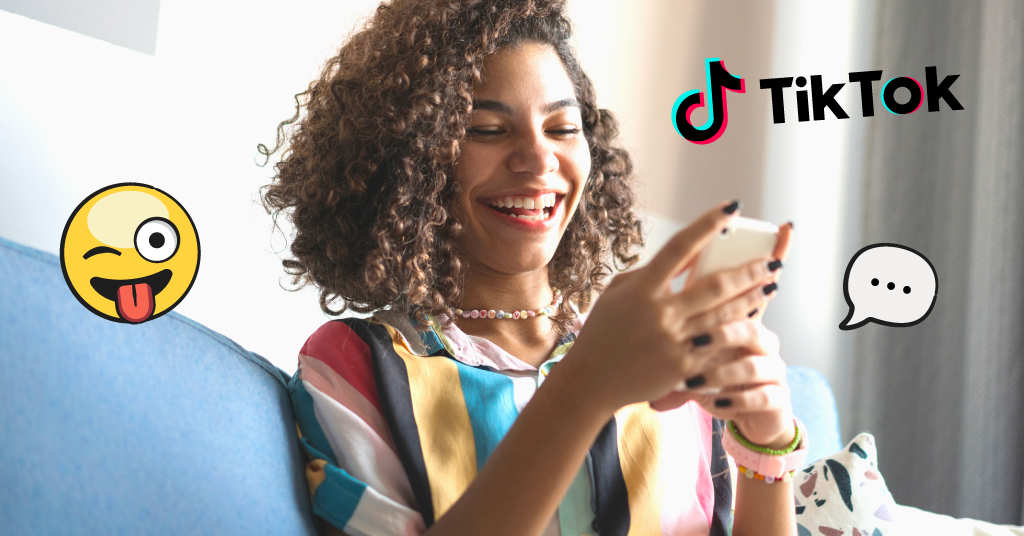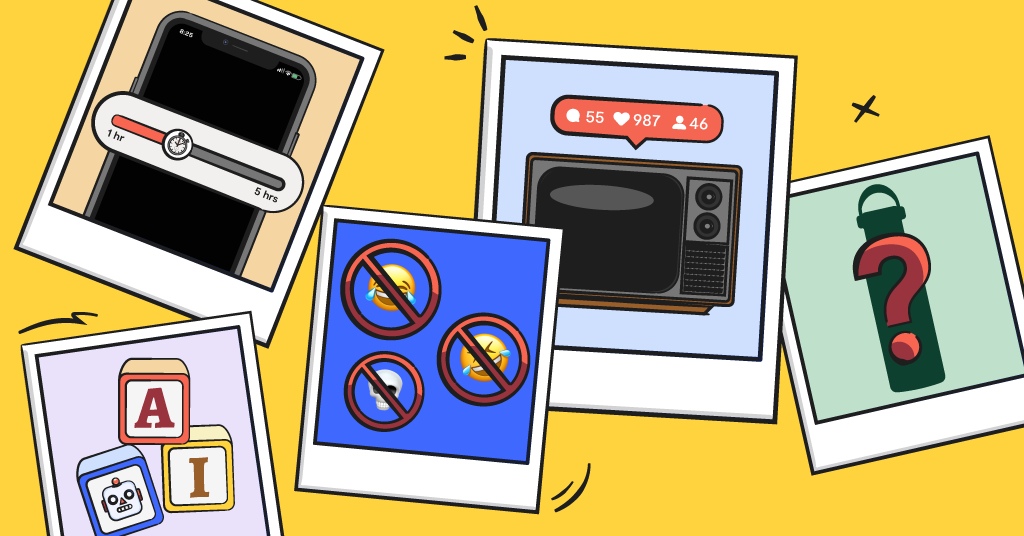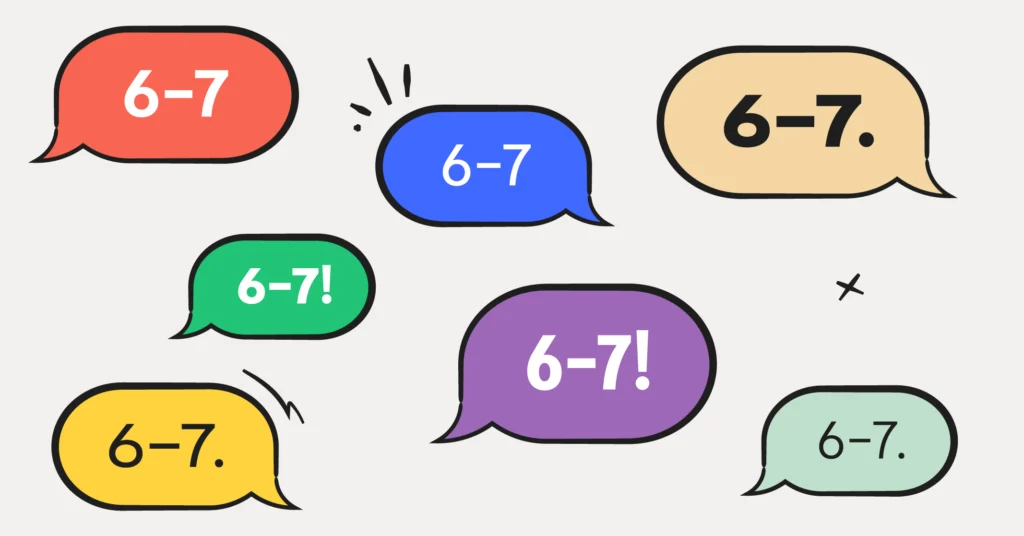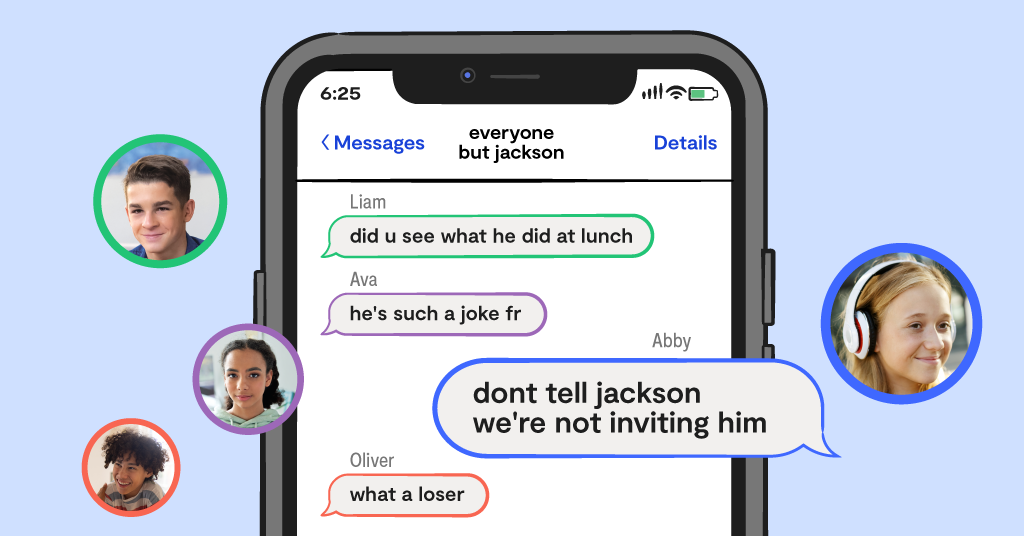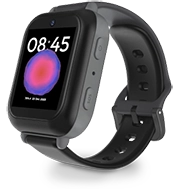Remember when slang consisted of simply a well-timed “As if!” or “Talk to the hand?” Us, too. Words and phrases used to spread slowly through school hallways, across summer breaks, and via the perfectly folded note passed during algebra class. Today, thanks to TikTok, kids spout off new slang words and viral phrases faster than we can figure out what they even mean, turning random sound bites into full-blown cultural moments overnight.
In this post, we’ll explain how TikTok is changing the way kids talk, how slang appears in the blink of an eye, and what you can do to try to keep up.
From “Did I Do That?” to “Low Taper Fade”
Before you say “Hey, my generation didn’t repeat such random nonsense!” — it’s important to remember that teen slang happens with every generation. It just usually hung around a little longer than it currently does in the age of seven-second video clips. In the past, kids repeated TV character catchphrases, commercial jingles, and famous movie lines. Remember any of these?
- “Got milk?”
- “Pizza! Pizza!”
- “Oh my god! They killed Kenny!”
- “As if!”
- “I’ve fallen and I can’t get up!”
- “You’re killing me, Smalls!”
- “Peanut butter jelly time”
These aren’t so much slang but more just earworms that kids repeated ad nauseum because it’s funny. It’s exactly what kids do today — there are just so many more forms of media to grab choice pieces of audio from. And what’s in vogue changes constantly. Not only are there millions of hours of TikTok and YouTube videos, but in 2024, a whopping 184 movies were released in the U.S. In 1997? Only 46. And this isn’t even counting all of the streaming TV shows and movies available on Netflix, Hulu, and all of the other platforms.
In short, we’re bombarded by media from all angles, and kids pick up on what’s popular. The popular term “skibidi” originated from a random YouTube video featuring an animated toilet singing a remixed version of a Timbaland song from 2007. Now it’s used as a nonsense word by kids from all over.
Why Are These Slang Words Repeated So Often?
Despite what we may think, it’s not (always) to confuse parents. It’s that language is just a part of how kids play, bond, and show they’re in the know. Think of it like linguistic currency — catchy phrases, inside jokes, and trending audios are how kids signal belonging and connection. And the lightning-fast nature of TikTok slang makes words and phrases come and go way more quickly than we’re used to.
When a kid repeats a random TikTok sound like “I like my suitcase” or “That’s not my name, quarterback,” they’re not trying to be profound, they’re simply inviting others in on the joke. If a classmate responds with the next line, boom — instant social glue.
TikTok, the Slang Incubator
As the king of pop culture, TikTok is where slang and culture trends emerge, reign supreme, and die out. A phrase can go from obscure to every classroom in America in 48 hours — and be cringe a week later.
Even if a trending sound originates from a different platform — like an audio clip from Twitch in the case of the “low taper fade” trend — it will gain momentum on TikTok. In the case of Jools Lebron’s very demure, very mindful trend, not only are people using the original audio clip and lipsyncing to it, they’re also creating their own audio versions, exposing more people to it, making memes about it, and skyrocketing its popularity.
The Fleeting Lifespan of TikTok Slang
Once a slang/sound reaches full saturation, it seeps into comment sections, platforms like Instagram and then Facebook, group chats, and finally — brands use it in organic social posts and in emails. Usually by this point, when a phrase has traveled so far from its original source, it’s considered “old.”
On the frontlines of kid slang are TikTok creators like Mr. Lindsey and Ms. Hope, and they’re constantly updating us with the newest and most confusing words and phrases. It seems like every week there’s a new buzz phrase, and it can be hard for a parent to keep up with the revolving-door that is TikTok slang. Just in 2025 alone we’ve seen:
- 6’7
- Good boy
- I like my suitcase
- Friggin’ packet
- Bruzz and huzz
- That’s not my name, quarterback
- Hyperpigmentation
- Chicken jockey
Even If Your Kid Isn’t on TikTok, They’re Probably Using TikTok Slang
TikTok may be blocked at your house, but that doesn’t mean your kid isn’t fluent in all of the latest slang trending on the app. TikTok trends spread like wildfire through schools, group chats, gaming lobbies, sports practices, and practically any other place kids gather. That latest new random phrase that’s trending? Your kid might not know where it came from, but they’ll absolutely repeat it, giggle, and move on to the next trend a week later.
Need Help Deciphering Slang?
At Bark, we keep tabs on emerging slang so you don’t have to. Though, if you want to try, we recommend just googling or typing into TikTok whatever strange phrase your child is saying — you can usually find some nice soul explaining it for adults.
But to keep things simple, our slang guides are constantly updated with the latest terms, and Bark’s content monitoring can flag potentially concerning language in your child’s texts and social media — including slang that could point to bullying, mental health struggles, or risky behavior.
If you want to pick the brains of other parents like you, join Parenting in a Tech World, our Facebook group. Families are regularly helping each other out and sharing what they’ve learned when it comes to the most popular (and confusing) emojis and slang.
Language evolves, especially when kids are behind the wheel. And while you may never fully speak the fluent TikTok dialect, understanding how it works (and how fast it moves) is half the battle. You’ve got this!
Read more
Bark helps families manage and protect their children’s digital lives.


